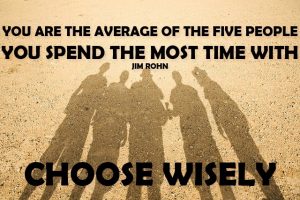 We are quickly coming up on that time of year when we turn the calendars over from one year to the next. For some reason, we usually use this time of year to turn over a new leaf as well. Last year at this time was a culmination of sorts for me of getting more disciplined. I had just completed a year where I began to focus on my health and lost almost 50 pounds. Combine that with my newly found financial discipline and I decided to actually make some real New Years Resolutions. I decided to put some goals that were realistic and others that I would consider “stretch goals.” Another thing I decided to do was write these goals down and keep them in a place that I would encounter often. I decided to put this list on a piece of paper that I kept in the folder where I kept my monthly expense documents.
We are quickly coming up on that time of year when we turn the calendars over from one year to the next. For some reason, we usually use this time of year to turn over a new leaf as well. Last year at this time was a culmination of sorts for me of getting more disciplined. I had just completed a year where I began to focus on my health and lost almost 50 pounds. Combine that with my newly found financial discipline and I decided to actually make some real New Years Resolutions. I decided to put some goals that were realistic and others that I would consider “stretch goals.” Another thing I decided to do was write these goals down and keep them in a place that I would encounter often. I decided to put this list on a piece of paper that I kept in the folder where I kept my monthly expense documents.
In the beginning of the year, I was doing a strong job of reviewing all of my finances month to month. I would categorize and analyze each and every expense. Keeping my resolution list in the folder where those documents lived seemed like a great way to keep them in the forefront of my mind. Unfortunately, some of the discipline that I was so proud of seemed to leave me mid-year and I have gotten away from that ruthless monthly analysis. The downstream impact of this has been that I have not looked at my resolution list in quite some time either. Today, the list popped into my head and before I dug it out and reviewed it, I decided to do so publicly via this blog since one of the primary reasons for starting this blog was to keep my self accountable to my goals.
Here is my list of Resolutions for 2018:
- 1. Keep weight under 235 pounds (FAILED)
- 2. Re-Read “Your Money or Your Life” and “A Simple Path to Wealth” (COMPLETE)
- 3. Read at least 15 books (later amended to say Read at least 15 books and Listen to at least 15 Audiobooks) (COMPLETE)
- 4. Increase personal investment account to $50,000 (FAILED)
- 5. Max out 401K (COMPLETE)
- 6. Max out Roth IRA (TBD)
- 7. Max out Wife’s Roth IRA (COMPLETE)
- 8. Start blogging regularly (COMPLETE)
- 9. Pay off Auto Loan (COMPLETE)
- 10. Pay Credit Card balances in full each month (COMPLETE- with exception of one month)
Considering that I haven’t looked at this list in a while and have not paid much attention to it, I was dreading this accounting. However, I think overall, I did a pretty good job of achieving my goals.
As for the failures, well, I came close. My weight was kept pretty steady under 230 pounds most of the year. However, in the summer, we went on a cruise and the temptations were just too great. Since coming back from the cruise, I have had a rough time finding my motivation and have allowed my weight to creep slight above my goal. I will be certain to include a weight goal in my resolution list for next year and push myself to get back to my daily routine. The additional failure listed was my personal investment account. At the end of the year, my total was approximately $28,000. My goal included the regular scheduled movement of money which would account for an additional $13,000 and then a bump from there to account for any additional money I would be able to squeeze out of our monthly expenses and divert to this account. This did not quite work out as my spending has increased somewhat over the second half of the year. Again, I would blame this on my relaxing of discipline. Couple that with turbulent markets the past few months and the account currently sits at approximately $38,000. This is well short of my goal.
In summary, I hit a large percentage of my goals for the year, but I cannot help but be disappointed in the misses. Especially since I can blame my own behaviors on both failures. I will use this as motivation to double down in the coming year and ensure that I renew the vigor with which I attack these goals. Stay tuned for a future post around the new year where I will lay out my Resolutions/goals for the coming year.
 Each year since I was a child, my family has hosted Thanksgiving Dinner.
Each year since I was a child, my family has hosted Thanksgiving Dinner.